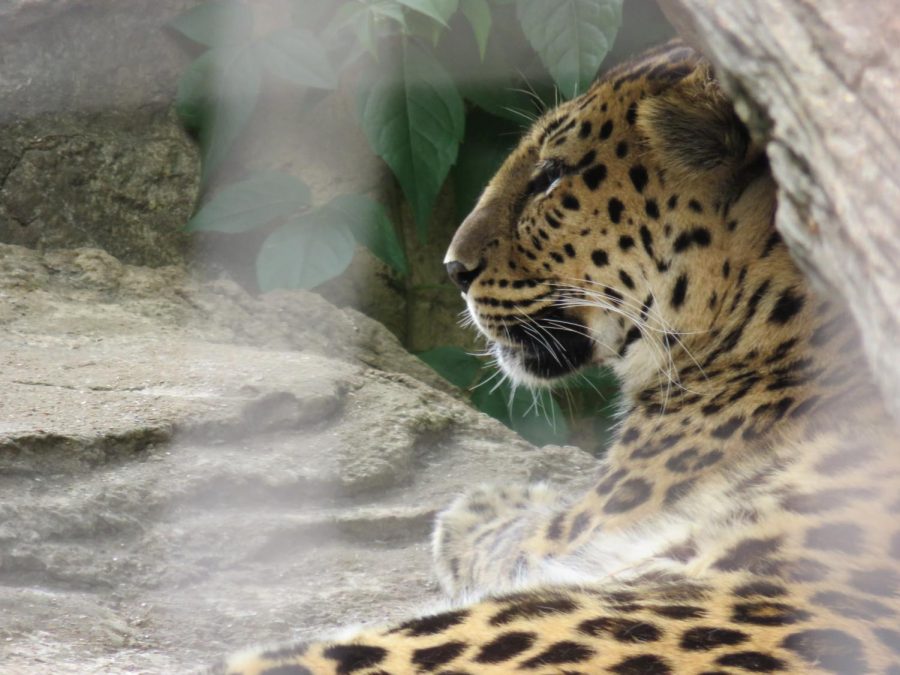Your donation will support the student journalists of Grand Center Arts Academy. Your contribution will allow us to purchase equipment and cover our annual website hosting costs.
A leopard in Big Cat Country. Notice the way I’ve used the mesh to frame it and carefully situated the camera so that none of the bars crossed the head.
St. Louis Zoo encompasses photogenic scenery throughout various habitats, exhibits
November 3, 2017
For someone who specializes in animal photography, this is an obvious choice. Not only is it regarded as one of the nation’s best zoos, it is also free, making it a prime spot for photography. It is very large, meaning there’s a lot of opportunities.
The zoo is divided into six sections. “River’s Edge”, as the name suggests, emulates the habitat of riversides and displays animals from such places. “Discovery Corner” is near the Zoo’s main entrance and includes the Monsanto insectarium and a large children’s zoo. “Lakeside Crossing” includes a lake full of waterfowl such as pelicans, ducks, and geese, as well as a relatively new sea lion exhibit. “The Wild” has the a partially indoors penguin exhibit, red panda and prairie dog enclosures, a huge great ape section and a flamingo pond. “Historic Hill” has three buildings, one for small primates, one for reptiles and amphibians (which also displays several large reptile species outdoors nearby the building), and one for birds with a decent sized bird garden nearby. “Red Rocks” displays hooved animals, ostriches, and kangaroos, and also has a section dedicated to felines.
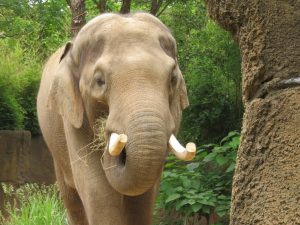
“River’s Edge” mostly has several very large enclosures, and you follow a trail to walk by all of them. Most of the enclosures are ideal for photography, as they do not have fencing or glass. Some new enclosures for two bear species and African wild dog has glass, so if you’re heart-set on photographing them you should make sure you bring a polarizer filter if you have access to one. I personally do not have any additional camera equipment, so I’d recommend that people in such situations put the lens against the glass for minimal glare, although this prevents you from photographing the animals up close.
There is a large, two part hippopotamus exhibit that, in my opinion, is one of the most interesting parts of the zoo. The main part is a glass tank where visitors can watch the hippos swim, and there’s a part where this action can be watched from the top of the water. The latter is much easier, but the glass part makes for more interesting photos.
The largest enclosure perhaps in the entire zoo is the massive elephant exhibit. Different parts display different individuals–elephant social dynamics make it unsafe to keep full grown males around the calves. It is easy to photograph in because there’s no metal fencing or glass, so I highly recommend this.
Another great part of River’s Edge is that there’s actually plenty of non-animal photo opportunities, as it is full of plant life and there’s a waterfall at the beginning of the trail. For shooting waterfalls, I recommend using a tripod and putting your camera on a low shutter speed–this is how the flowing water effect that you see in many waterfall photos is achieved. If you go in the winter, you may also have an opportunity to photograph it when it is frozen.
There is also a cheetah exhibit in River’s Edge, but the cheetahs are typically in the back. In fact, I don’t recall seeing them in plain view since I was in Elementary school. If you’re going to that part of the zoo just for the cheetahs, I would advise you not to waste your time on it.
“Discovery Corner” has two areas in which there are animals to be photographed. The insectarium has two parts, the main part and a butterfly dome. It is so dark inside the main part that if you don’t have proper equipment for photographing in low light, it’s useless to try and photograph there. I would skip it and head straight to the butterfly dome. Additionally, without manual focus it will be very hard to achieve the desired results with your photo. The only aspect that wouldn’t be against you is that the bugs are typically stationary, so you don’t have the struggle of trying to photograph moving subjects in dark lighting.
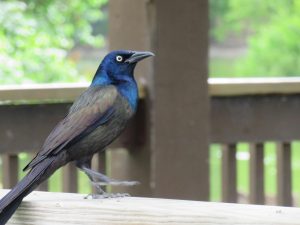
You can also photograph the naturally occurring animals. Areas where people are eating are ideal for this.
The butterfly dome is worth your time if you’re a photographer. Although I don’t have any extra lenses yet, if you have a macro lens this would be a great opportunity to use it. Even without the macro lens, it is worth your time and will help you get some nice photos. I’d recommend you use manual focus on the butterflies, but even if you can’t you still have a pretty good chance of getting something you like.There are even more flowers here than there are at River’s Edge. On the way out of the dome there’s an outdoor part aimed at attracting native butterflies. Although you don’t get the exotic animal factor one would look for at a zoo, it still makes for a good photo opportunity. After all, who doesn’t love butterflies on flowers?
The other part of Discovery Corner, the Children’s Zoo, actually has some good photo opportunities, and if you are able to I actually would recommend coming in to take some photos. It does cost extra, but if you get there before 10 AM it’s free. That way, not only will you not have to pay, it will spare you the awkwardness of ordering a ticket to the children’s zoo. The animals on the display I find to be noteworthy are fennec foxes and meerkats, which are kept indoors, so keep that in mind when you go to photograph them. There’s also a river otter, kept behind glass outside. The otter moves very fast, but through the same routine repeatedly, so although it may be challenging, by dedicating effort and time you have a chance of getting something. I recommend trying for shots of it running into the water.
Apart from the sea lion exhibit, “Lakeside Crossing” would be easily dismissed because it doesn’t feature any other exotic or rarely seen animals, but if you have extra time I would recommend trying to photograph some of the birds on the lake.
The sea lion exhibit is superb in terms of viewing. The part where you get an above water view is a pretty safe bet for photographing them when they peak out from the water and sleep on rocks. For the swimming ones, it is a good idea to learn their routines so you can have your camera pointed there in advance, which increases your chance of getting the shot you want. With the tunnel, it would be difficult to get a good photo that is simply an underwater sea lion photo given the fact the shape of the glass is curved and that it is often very crowded, making reflections pretty much unavoidable. However, with some creativity, you can use the fact that it is a tunnel filled with visitors to your advantage. I also recommend coming in the winter or early spring, because the sea lions tend to interact with visitors a lot more.
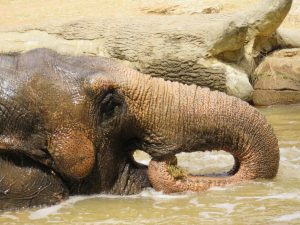
The red panda and prairie dog exhibits are fantastic for photography, because the animals are fairly close to zoo-goers and there is no glass or fencing to deal with. The Red Panda is often hiding in its enclosure and you aren’t guaranteed a good view, but with prairie dogs there is pretty much always a photo opportunity, given that there are so many of them. Also, they often interact with naturally occurring squirrels and birds, so that could allow for some interesting photos.
The flamingo pond makes for good photos, and lends itself to some environmental group shots.
The new polar bear exhibit is great for typical visitors, but as a photographer it has its challenges and I have yet to get a photo in it that I really like, although I haven’t been able to spend much time trying. The large great ape exhibit includes an ape house and outdoor enclosures. Glass is an issue for most of it, but apes can make for interesting subjects and you can photograph their often human-like behavior.
The indoor section of the penguin exhibit is infamous for being very cold. It is also quite smelly, so if you are especially sensitive to smell it would not be for you. It’s also pretty dark, so photographing without special equipment is a challenge. My suggestion would be to stick to the outdoor part.
I haven’t had a chance to see the new Grizzly exhibit, but from what I’ve seen it looks amazing, with a naturalistic design that emulates the habitat of real grizzly bears, perfect for photography. It does seem to have glass, which would be a bit of an impairment, but it seems to me like the potential result would be worth the struggle.
Some parts of “Historic Hill” are also worth a photographer’s time. In the primate house, given that the animals there are so energetic and it’s so dark, unless you have equipment made for such things, put your camera on burst setting. However, if you don’t have much time, or much space on your memory card, I’d just move on to other parts of the zoo.

The Herpetarium, which displays reptiles and amphibians, can offer some excellent photo opportunities. Although not many people are fans of these creatures, they offer interesting textures, patterns and colors and are often stationary, making it easier and quicker to get a good shot, and also to experiment with camera placement and techniques. There are several downsides, however. The first is that it is pretty dark, and even with a point and shoot you can find some spots that are well-lit enough. I would strongly suggest using manual focus here, because in my experience point and shoot cameras have trouble distinguishing the subjects.
I’ve not gotten around to the Bird House and garden in a very long time, so I wouldn’t be able to give good advice based on lack of recent experience.
The world’s fair flight cage is a great part of the zoo for photography that I highly recommend. In fact, I regret not spending more time there. Although the inhabitants may not interest you as much as tigers and elephants, it is a really good opportunity to take animal photos without the angle limitations of typical enclosures, and capture animals in convincing environments. I am personally going to start prioritizing this part of the zoo.
“Red Rocks” displays predominantly large mammals, and several bird species. The large mammal selection consists mostly of hooved animals, but kangaroos and some cat species as well.
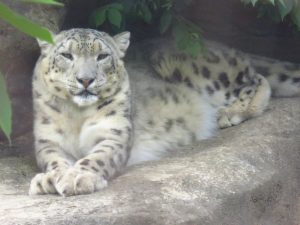
The Antelope House is exactly what the name implies: a stable where animals are kept, often for the season. Although I can understand why you’d go in to see your favorite animal that is off-exhibit for the season, it is most certainly not worth it for photography. It is extremely dark, the stables are barred and the spaces the animals are in are uninteresting.
Big Cat Country is a decent sized feline section of the zoo. The enclosures for the lion, tiger and jaguar are large and viewed from far overhead. The angle can be a bit odd in photos, but you can make it work. The real difficulty is the enclosures for smaller species (cougar, serval, leopard). They are pretty well decorated, but they are fenced with mesh, a zoo photographer’s worst enemy. Fortunately, the wires are thin enough to blur out to be non-distracting, as long as they don’t cross any of the animal’s main features.
The rest of “Red Rocks” is paths lined with enclosures. They are good for photography because they don’t have wire fencing or glass that would typically be an impairment.
In conclusion, the spots you’ll want to hit are River’s Edge, the prairie dogs, World Fair Flight Cage and “Red Rocks”. Now, it’s time for you to take advantage of this free gold mine of photography opportunity.
